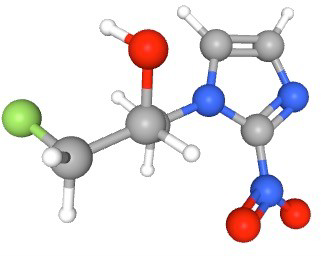Garibotto Valentina

Research

My research group works on the validation of novel radiopharmaceuticals, with the aim to provide each patient with an accurate diagnosis and each clinician with appropriate tools to diagnose the disease and to evaluate treatments. My research group benefits from a unique and privileged position, on one hand working in close collaboration with various research groups and on the other hand being embedded in a clinical division for patient diagnosis and care. My research line is specifically focused on the use of molecular imaging techniques in neurodegenerative conditions, as an opportunity for precision medicine. The availability of in vivo biomarkers of these pathologies, namely Alzheimer’s disease, has dramatically changed over the last decade how we evaluate patients and how we test new drugs.
My research includes as well the validation of novel tracers in oncology, specifically for prostate cancer. I am coordinating and have coordinated multiple projects on the validation of radiopharmaceuticals of tumor metabolism, hypoxia and prostate-specific membrane antigen expression for their diagnostic accuracy and support for treatment planning.
I have an extensive clinical and research experience in molecular imaging, both in clinical studies and preclinical studies in animal models. The core of our discipline is the development of novel radiopharmaceuticals, allowing to target novel molecules both for diagnostic and treatment purposes. The nuclear medicine imaging techniques, namely PET, have become a routine diagnostic procedure in many oncohematological conditions and targeted radionuclide treatments are becoming standard-of-care treatments not only for thyroid cancer, but also for neuroendocrine tumors, prostate cancer and theoretically many others. My solid knowledge of imaging quantification and technological development, my experience coordinating research studies and supervising collaborators and my large network of international collaborations and well established role in the nuclear medicine community worldwide provide to the CRTOH a strong connection with the majordevelopments in our field.
Selected publications
- Katirtzidou E, Rager O, Varoquaux AD, Poncet A, Lenoir V, Dulguerov N, Platon A, Garibotto V, Zaidi H, Becker M. Detection of distant metastases and distant second primary cancers in head and neck squamous cell carcinoma: comparison of [18F]FDG PET/MRI and [18F]FDG PET/CT. Insights Imaging. 2022 Jul 28;13(1):121.
- Zaker N, Kotasidis F, Garibotto V, Zaidi H. Assessment of Lesion Detectability in Dynamic Whole-Body PET Imaging Using Compartmental and Patlak Parametric Mapping. Clin Nucl Med. 2020 May;45(5):e221-e231.
- Mainta IC, Zilli T, Tille JC, De Perrot T, Vallée JP, Buchegger F, Garibotto V, Miralbell R. The Effect of Neoadjuvant Androgen Deprivation Therapy on Tumor Hypoxia in High-Grade Prostate Cancer: An 18F-MISO PET-MRI Study. Int J Radiat Oncol Biol Phys. 2018 Nov 15;102(4):1210-1218.
- Lamanna G, Tabouret-Viaud C, Rager O, Jorcano S, Vees HJ, Seimbille Y, Zaidi H, Ratib O, Buchegger F, Miralbell R,Zilli T, Garibotto V. Long-term Results of a Comparative PET/CT and PET/MRI Study of 11C-Acetate and 18FFluorocholine for Restaging of Early Recurrent Prostate Cancer. Clin Nucl Med. 2017 May;42(5):e242-e246.
- Buchegger F, Garibotto V, Zilli T, Allainmat L, Jorcano S, Vees H, Rager O, Steiner C, Zaidi H, Seimbille Y, Ratib O, Miralbell R. First imaging results of an intraindividual comparison of (11)C-acetate and (18)F-fluorocholine PET/CT in patients with prostate cancer at early biochemical first or second relapse after prostatectomy or radiotherapy. Eur J Nucl Med Mol Imaging. 2014 Jan;41(1):68-78.
